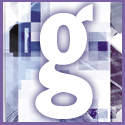I often need to free up room on my hard drive. Could you provide me with a list of file types that I can delete without asking for trouble?
 |
Yes, and we'll list them in a minute. But before you rush in and start large-scale sweeping operations, here's some general advice about cleaning up your hard drive.
Leave new files alone. Even temporary files serve a purpose. Don't delete files dated today. Or, if you don't turn off your system each day, avoid deleting any temporary files created since you last booted up. They may still be in use.
Play it safe. If you're not sure whether it's safe to remove a file, move it to another folder/drive or compress it into a ZIP file. If you don't miss it after three months, then delete it.
Uninstall unwanted programs. In Windows 9x, select Start, Settings, Control Panel. Double-click Add/Remove Programs. On the Install/Uninstall tab (or on the main pane in Windows 2000), look for programs you no longer use. When you find one, select it and click Add/Remove (Remove in Windows 2000).
If you've upgraded Windows and are happy, go ahead and remove old Windows 3.x and MS-DOS system files and/or delete Windows 98 uninstall information. Click the Windows Setup tab and then the Add/Remove Windows Components button, and uncheck any Windows features you don't want.
Clean out internet files. It's astonishing how much rubbish you pick up surfing the web. In Internet Explorer, select Tools, Internet Options. On the General tab, click the Delete Files and Clear History buttons. In Navigator, open the cache folder in your Netscape folder and delete all the icons in it.
Note that when you delete cached files - as well as History archives - you may sacrifice some productivity, as some sites will take longer to load once the cached version has been zapped.
Use software to simplify the cleaning job. We recommend Symantec's CleanSweep, which is available by itself or as part of Norton SystemWorks, a very comprehensive collection of utilities. CleanSweep's Fast & Safe Cleanup feature is an excellent tool for finding the files you don't need. By default, it does not look for all the file types in our list, but you can click the Settings button to add them.
Now you've read our cautionary advice, here is a list of file extensions that it's normally safe to delete:
*.*
*.---
*.1st
~$*.doc
*.bak
*.bmp
*.cab
*.chk
*.dos
*.fts
*.gid
*.log
*.old
*.prv
*.shs
*.tmp
*.wbk
Many deletable files are hidden so, you must ferret them out by going to any open folder in Windows Explorer and selecting View, Options (or View, Folder Options or Tools, Folder Options). On the View tab, select Show all files, then click ok. Use the Find tool (or Search Bar in Windows 2000) to begin your deleting.
To delete all the BAK files, for example, select Start, Find, Files or Folders (or Start, Search, For Files or Folders), and in the Named (or Search for files named) field, type the extension exactly as you see it in the chart, that is, *.bak. Click Find Now (or Search Now) and watch the deadbeats gather in the bottom pane. When the search is complete, click inside the file list pane, press Ctrl, A (for Select All), then Delete.
|
 Introduction | General
Introduction | General
